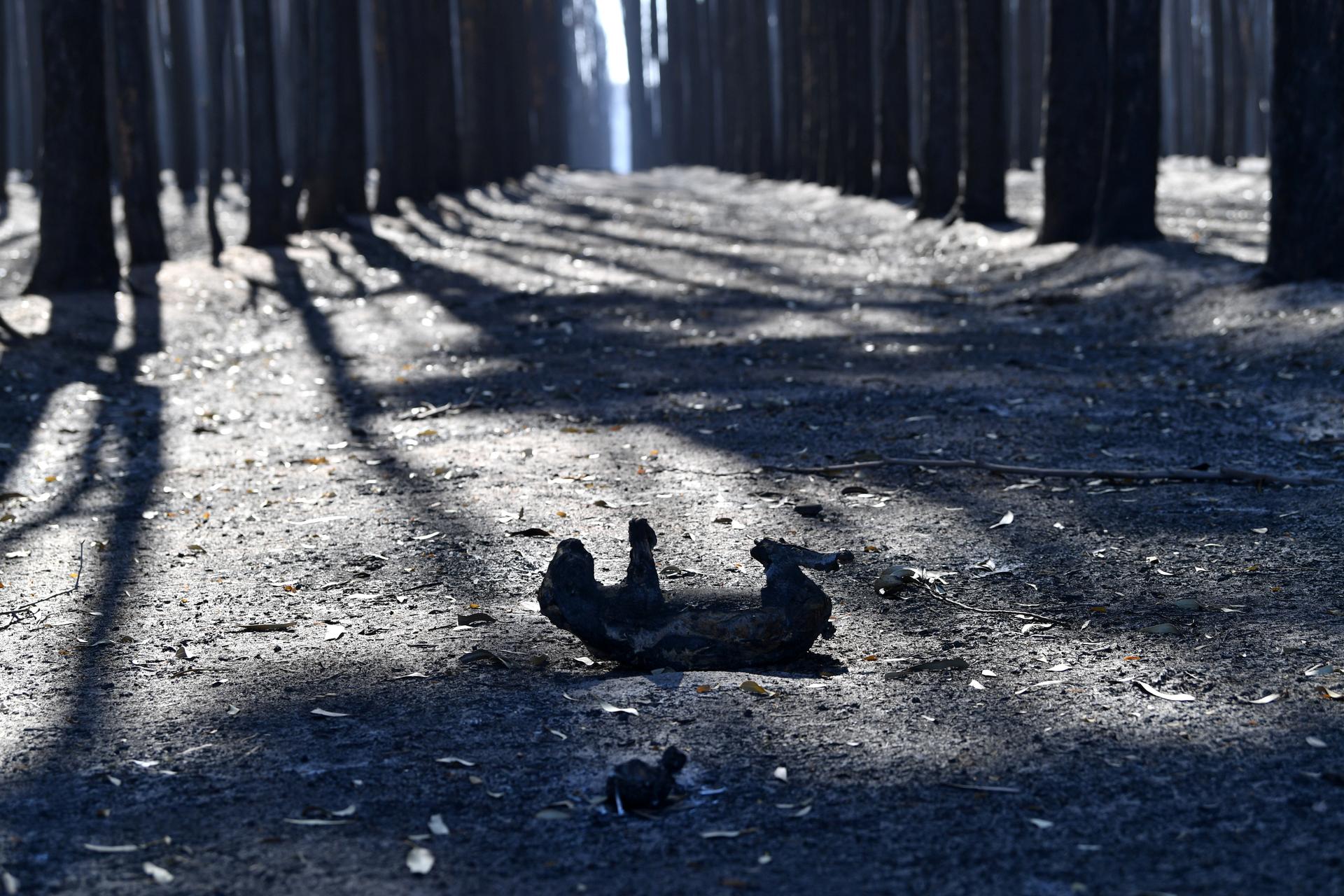1 billion animals have died in Australian bushfires, ecologist estimates
Wildlife rescuer Simon Adamczyk is seen with a koala rescued at a burning forest near Cape Borda on Kangaroo Island, southwest of Adelaide, Australia, on Jan. 7, 2020.
Australian firefighters used a break from searing temperatures on Tuesday to strengthen containment lines around huge wildfires as the financial and environmental costs of the crisis mounted.
More than 25.5 million acres of land — an area the size of South Korea — have been razed by bushfires across the country in recent weeks, according to the latest data, with the southeast particularly hard hit.
Imagery posted online from the Himawari 8 Japanese satellite and NASA’s Earth Observatory showed plumes of smoke from the fires reaching as far as South America.
Related: Thousands flee fires in Australia, navy helps evacuate the stranded
The devastating bushfires are exacting a heavy human toll — at least 24 people have died since September. Wild animals have fared much worse.
The University of Sydney ecologist Chris Dickman stunned people recently with his estimate that 480 million animals have been injured or killed in Australia’s bushfires. A few weeks later, the fires have spread even farther, and he’s updated the impact to include 1 billion animals.
“The 480 million estimate was made a couple of weeks ago, and the fires have now burnt over a large area of the further country. That means over 800 million mammals, birds and reptiles have been affected by the fires. Australiawide, it’s probably over a billion,” Dickman said. “I think there’s nothing quite to compare with the devastation that’s going on over such a large area so quickly. It’s a monstrous event in terms of geography and the number of individual animals affected.”

Dickman spoke to The World’s Patrick Winn about the conditions animals in Austalia are now facing.
Patrick Winn: Give us a better idea, not to be morbid, but how these creatures are dying. Are we talking about actually being burned to death? Smoke inhalation or starvation? What are the different scenarios here?
Chris Dickman: Death by flames is the most obvious. Some of the images of koalas bring home what that’s like most vividly. At the fire front, firefighters have talked about the shrieks of koalas, just screams of pain as they die. It’s just horrendous. For others, perhaps those in tree hollows or perhaps those who haven’t been able to go too deeply under the ground, smoke inhalation will be a real problem. For the others, it’s probably a slower demise. For the species that go underground and then reemerge after the fires have gone through, there’s really nothing except ash on the surface. So, it’s very difficult to find resources.
Australia is known for its just amazing wildlife diversity. So, are we looking at the extinction of certain creatures being hastened by this?
Yes, I think we are. We know that Australian biodiversity has been going down over the last several decades, and it’s probably fairly well known that Australia’s got the world’s highest rate of extinction for mammals. It’s events like this that may well hasten the extinction process for a range of other species. So, it’s a very sad time.
What creatures are you really feeling for right now?
It’s something called the greater glider — the world’s largest gliding mammal. It looks a little bit like Gizmo from one of the Steven Spielberg movies some years ago. It’s restricted to the eucalypt forests, it’s got a diet that’s even more restrictive than the koala — they’ll be cooked in these fires. The yellow-bellied glider, as well, another stunningly beautiful marsupial, not very well known. They are, again, restricted to the eucalypt forests, and they’re going to be very susceptible to these fires.
How have human beings helped create the conditions for this crisis?
What we’re seeing is the effects of climate change. Sometimes, it’s said too that Australia is the canary in the coal mine with the effects of climate change being seen here most severely and earliest, as well. We’re probably looking at what climate change may look like for other parts of the world in the first stages in Australia at the moment.
Professor Dickman, you’re demeanor seems very calm, but do you think it’s time for people to freak out? If so, what should they be doing in response to this?
I think there is a feeling among environmental scientists and ecologists in Australia that we’ve been frozen out of the debate, certainly out of policymaking. I think it’s now time to bring the scientists back into the tent to look at what is likely to be happening over the next few decades and to think about how we can maintain both the human community in good health and as much biodiversity as can be retained under this evolving situation.
This interview has been lightly edited and condensed for clarity. Reuters contributed to this report.
